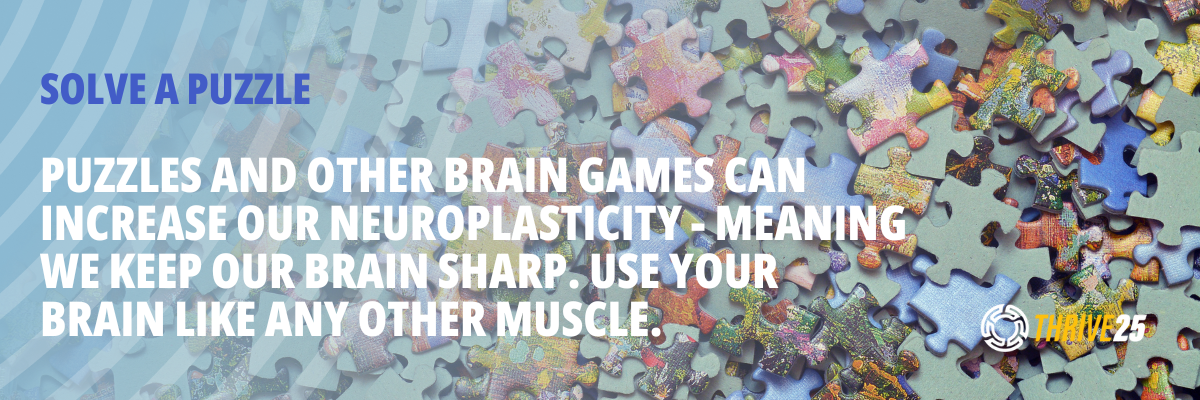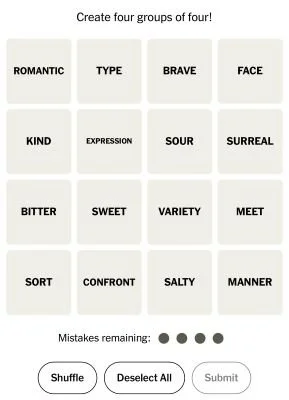Issue #309: Use It or Lose It
Good morning. It’s Tuesday, February 27th.
Stat of the Day
The number of signals our eyes send to our brain every second. But only 10% of what we see comes from our eyes - our brains make up the rest of the story (fills in the puzzle) for the other 90%. (source)
Learn
Use It or Lose It
If we don’t workout - then our muscles are going to shrink. That seems like a pretty obvious statement.
It’s why it’s essential to keep working out consistently for our entire life.
But what about our brain?
There’s been mixed science on whether or not our brains can continue to grow after adolescence or if our neurons degrade if they aren’t actively stimulated.
More and more the science is telling us that our brain is just like our muscles - we gotta work out our brain just like we do our quads and biceps.
When we’re growing up our brain is constantly changing - we’re getting new neurons (brain cells), they’re moving to new places within the brain, and we’re strengthening the connection between neurons. This process continues until we’re about 25 - there was a joke from Dr. Mark D’Esposito that car rental companies knew more about the brain than neuroscientists.
As adults it was thought that brain growth - neuroplasticity - wasn’t really possible. But that doesn’t seem to be the case. We can actually strengthen the connections between brain cells.
This works the other way too - stress, hormonal changes, certain drugs, and even our environment can degrade our cognitive function.
While neurologists are working on it - today there isn’t a test that’s as objective as a set of fitness challenges to measure the health of our brain.
But while that’s on it’s way, there are a number of things we can do to keep our brain as sharp as possible, for as long as possible.
It’s not surprising that exercise is on the top of the list.
There was a study of people aged 45-75 that compared MRI scans of their brain with how many hours they spent sitting. The people who sat the longest had a thinner medial temporal lobe (MTL). This is the part of the brain associated with making new memories.
There was another study about jigsaw puzzles - my wife is a fanatic and will love this one.
Turns out doing puzzles is associated with better visual-spatial recognition. This includes skills such as - perception, working memory, reasoning, speed, and mental rotation.
Maybe that’s why the NYTimes is basically becoming a gaming company - with everyone talking about Wordle, Connections, Spelling Bee, and the old-school Crossword Puzzle.
Or try BrainHQ, developed by award-winning neuroscientist Dr. Michael Merzenich. Spending 10-20 min a day is designed to boost your overall cognitive function through a personalized program based on your previous results.
Try
Solve a Puzzle
Turn off the TV, silence your phone and break out an old school 1,000 piece puzzle. Here was one of our favorites we did last year - even my 6-yr old filled in a few pieces.
And yes, it’s a bummer not having the normal square to find all the edges first.
BONUS: Limit the amount of time you spend sitting - get a sit-stand desk. We promoted this in the past, but I can’t say enough for how much better I think and how much more energy I have when I can stand for 10-20 min every hour when I’m working or writing this newsletter.
Thrive25 Partner Spotlight
Did you know that integrating just five minutes of mindful breathing into your daily routine can result in a 14% increase in productivity, a 25% decrease in stress levels, and a 17% improvement in overall mood?
The breathing.ai browser extension makes mindful breathing easy to do throughout your workday.
Tomorrow, we’re excited to partner with Hannes Bend and breathing.ai at Synapse Summit 2024 to help more people experience holistic health and wellbeing.
Measure
Blood Oxygen Saturation
Newsflash: our bodies require oxygen to function!
Oxygen enters our body every time we breathe - then it passes through to our lungs and into our bloodstream. We talk a lot about mitochondria being the power plants in our cells - well, oxygen is the catalyst.
Red blood cells transport oxygen to our cells to create energy and then grabs the process’s byproduct, CO2, and returns that to the lungs to exit the body when we exhale.
What’s my number
Blood oxygen saturation (Sp02) is a measure of the percent of oxygen in your blood. And since we need oxygen, you probably think we want to be close to 100%. And you’d be right:
Optimal: 98-100%
Normal: 95-97%
Hypoxemia: < 95%
Certain conditions like COPD and sleep apnea will have “normal” results at lower levels. Also, SpO2 was all the rage at the height of COVID-19, because Dr. Fauci told us our level may be lower before the onset of other symptoms. So - if your value is under 95%, be sure to reach out to your doctor.
What about accuracy?
But, before you make the call…
The Cleveland Clinic says a pulse oximeter (buy on Amazon for as low as $9.98) has a 4-8% error rate. Just a bit of a problem when the optimal range has a 2% window. Also, the NIH notes racial bias with oximeters - people with darker skin will have incorrect readings as the infrared light is unable to penetrate the skin in the same manner as people with lighter skin.
So use the same pulse oximeter device, or your watch, for relative readings, but for the most accurate results get an arterial blood gas (ABG) test. Be sure to request this test at your next physical - it’s great because it also measures carbon dioxide and your pH balance - not included in your typical panel.
Laugh
Do You Know Selena Gomez?
Into Only Murders in the Building?…
In the News
Excuse Olympics 2024: What are some of the things that get in the way of your New Year's Resolutions? Too expensive? Don’t have time? I’m self-conscious? Check out these tips to combat excuses. (NYTimes)
Strong Women: The problem with research on women and strength training is there’s not enough. This inspired researchers to combine the results from 40 previous studies with a new study of 1,300 women to test physical activity in strength training. Spoiler: results showed strength training led to improvements in strength and muscle size. (Outside)
Why Wordle: Everyone wants that neuroplasticity - and hit of dopamine. In less than 4 months, Wordle went from no views to 45M. This surge prompted The New York Times to buy the game, and now 2M people play each day (with countless more playing free derivatives). (Source)
Thanks for joining us today!
Check out the latest workout videos on our YouTube channel
Got feedback, recommendations or stories to share? Tell us what’s on your mind here
Want this direct to your inbox? Sign up here
Why Thrive25
We’re 40-something dads that felt our bodies and minds start to slow down and we’re not ready for that. We found too much information on every subject. So we started Thrive25 to transform what we’ve learned into something useful for the rest of us to spend just 3-5 min a day to optimize our health & longevity.
This newsletter is for you and we truly value your feedback. Never hesitate to reach out to us at team@thrive25.com.
To health!
Sign up for free:
The information in this newsletter is for informational purposes only and may not be appropriate or applicable based on your individual circumstances. Thrive25, Inc. does not provide medical, professional, or licensed advice. Please connect with your healthcare professional for medical advice specific to your health needs.








